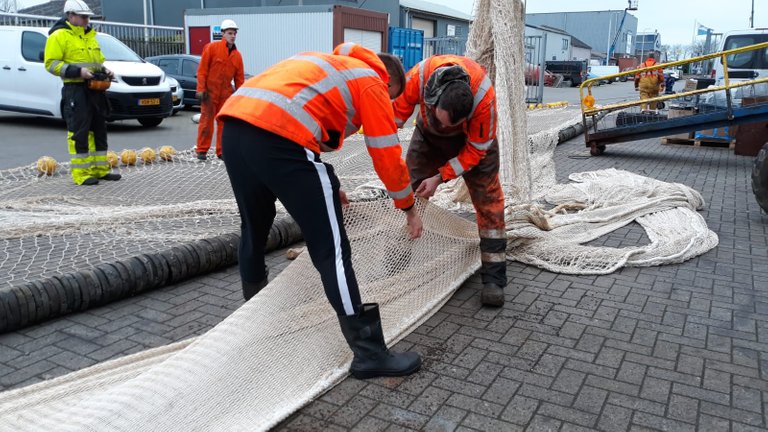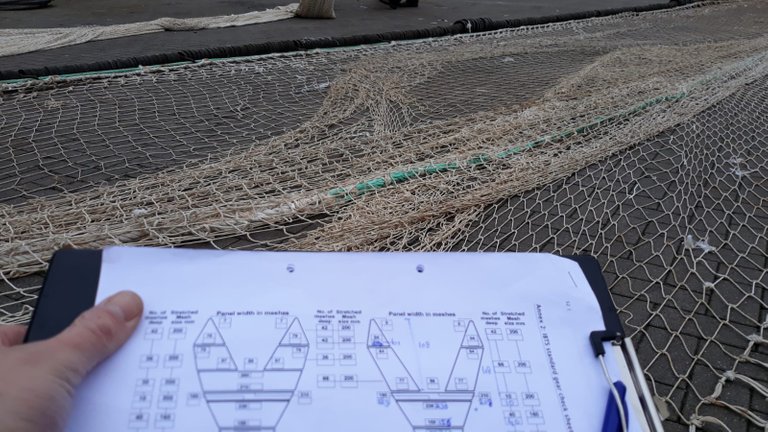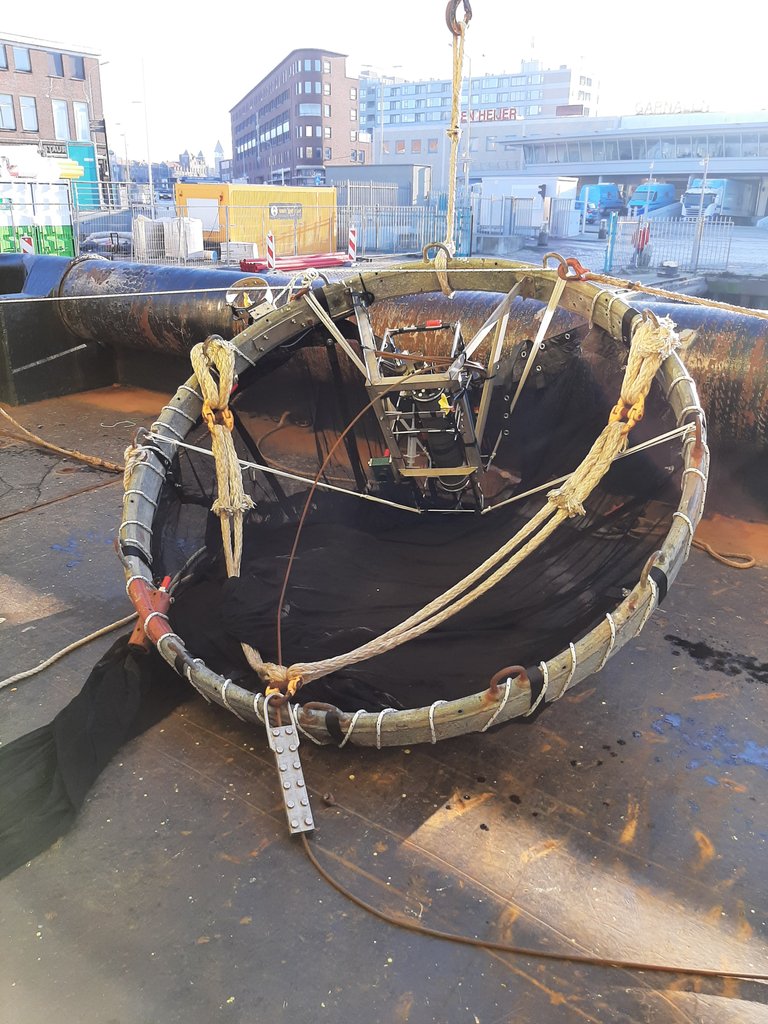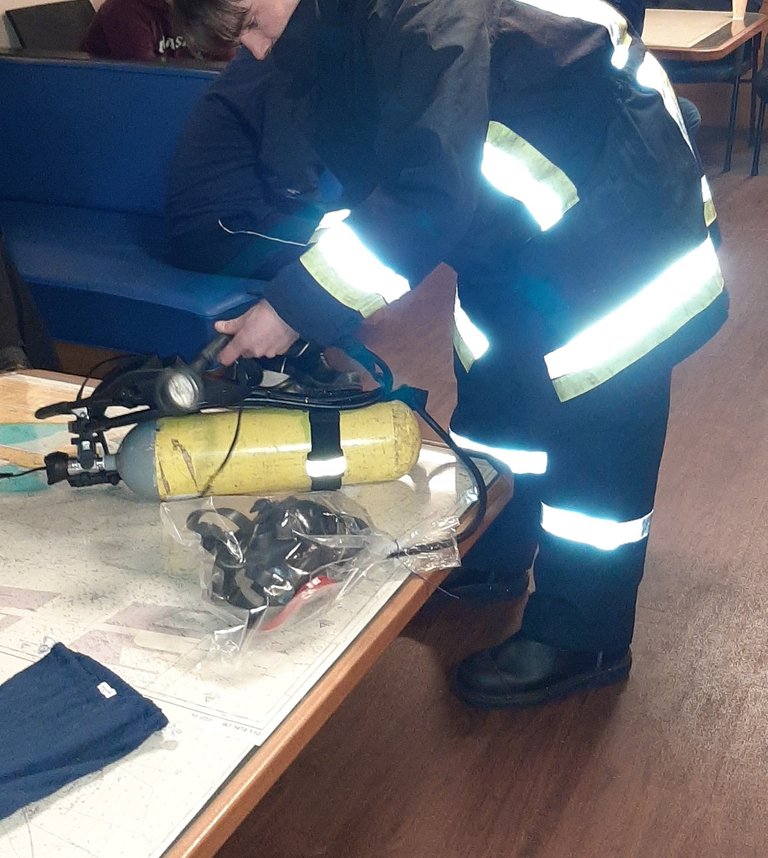At the time of posting, most of the preparations for the IBTS 2021 have been made and we are almost ready to go. Parts of the preparation include the international coordination, the preliminary meeting with the researchers who will be doing the work on board for the next 5 weeks, collecting and bringing all materials on board and setting up the measuring stations on board.

Measuring the gears (photos are are taken early 2020 prior to COVID-19).
A part is of course the preparation of the fishing gear. The fishing gear (the GOV) is managed by the Rijksrederij and several gears are brought on board before the start of the survey. Before the rigging starts, a number of the gears are first measured to check whether they still meet the IBTS guidelines. The network can shrink so that it no longer meets the dimensions, deformation can also occur because the shrinkage is not the same everywhere. And repairs can cause a difference in the number of meshes or in the size of the meshes. All this is accurately determined and registered by the crew in consultation with the researchers. A margin is allowed according to the guidelines, therefore not all gears are exactly the same. For this reason, all gears are numbered, the measurements per gear and any major repairs are recorded in a logbook.

Registration of the measurements on the gear drawings.
During the day we use the fishing gear, but we also go to work at night and then we use the fine-meshed MIK net (500 µm) to catch fish larvae. This net was also prepared before the start of the survey and is ready to be deployed during the first night. The preparations for the MIK net cover a bit more than just hanging the net correctly. A MIKey net (200 µm) is attached to the outside of the MIK ring, and an electronic flow meter is mounted in both nets, these flow meters transmits the information via the fishing line to the computer in the lab on board. A Seabird-CTD is also mounted in the middle of the net, and also transmits the information via the fishing line to the lab. With the flow meter we can determine how much water has passed through the network (eg along the flow meter) and the CTD provides information about the position of the MIK network in the water, in addition, the CTD continuously registers the temperature and conductivity (measure for the salinity of the water).

The MIK-net with CTD laying on the deck.
New this year in the preparation was a COVID-rapid test before boarding. Fortunately everyone was negative and so everyone can come this week. After the tests we could start with the safety rounds and safety drills. For example, the fire suits have been tested and the new Man-Over-Board boat has been tested. And then we could really leave !!

Testing the fire suits.